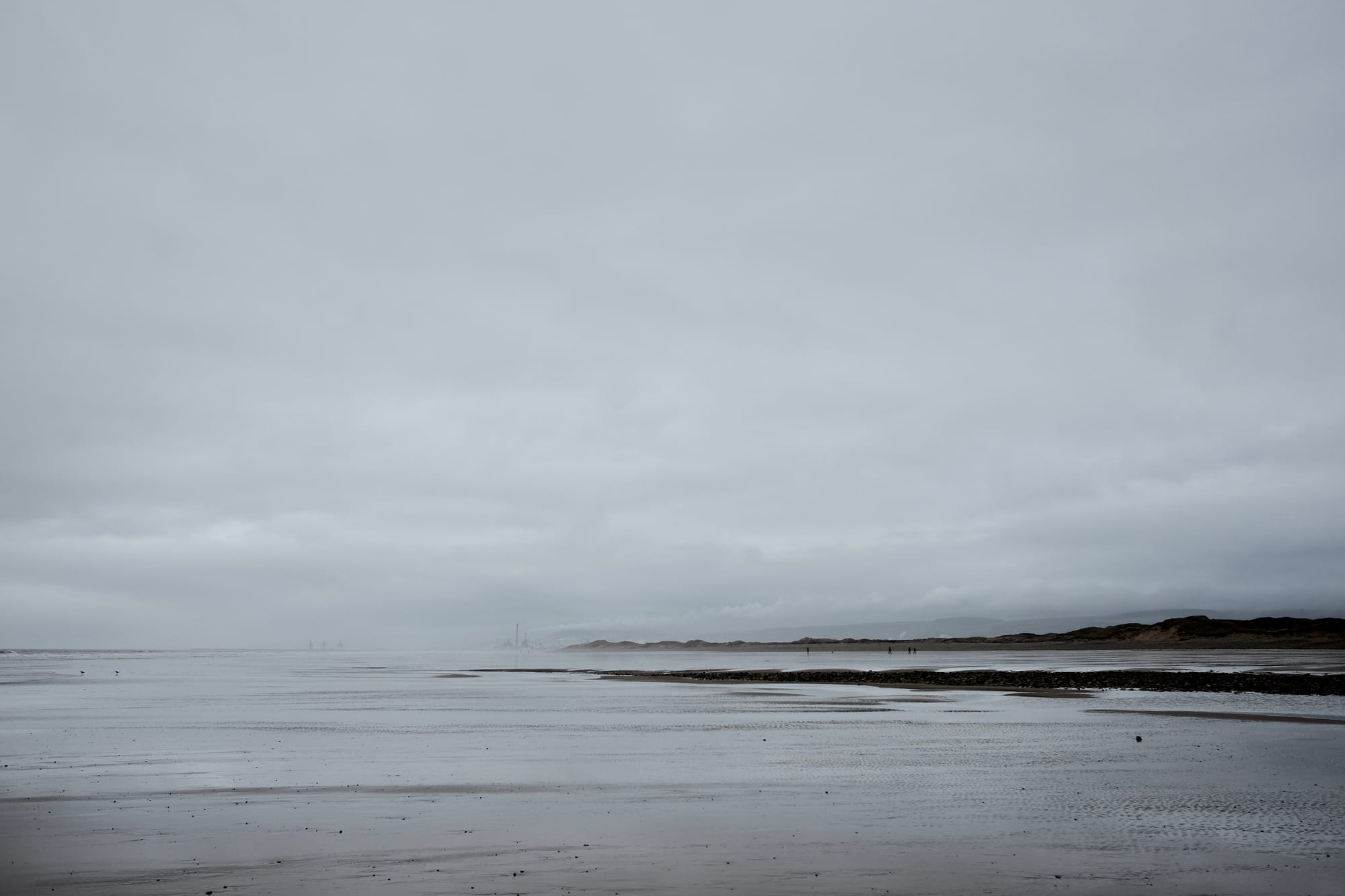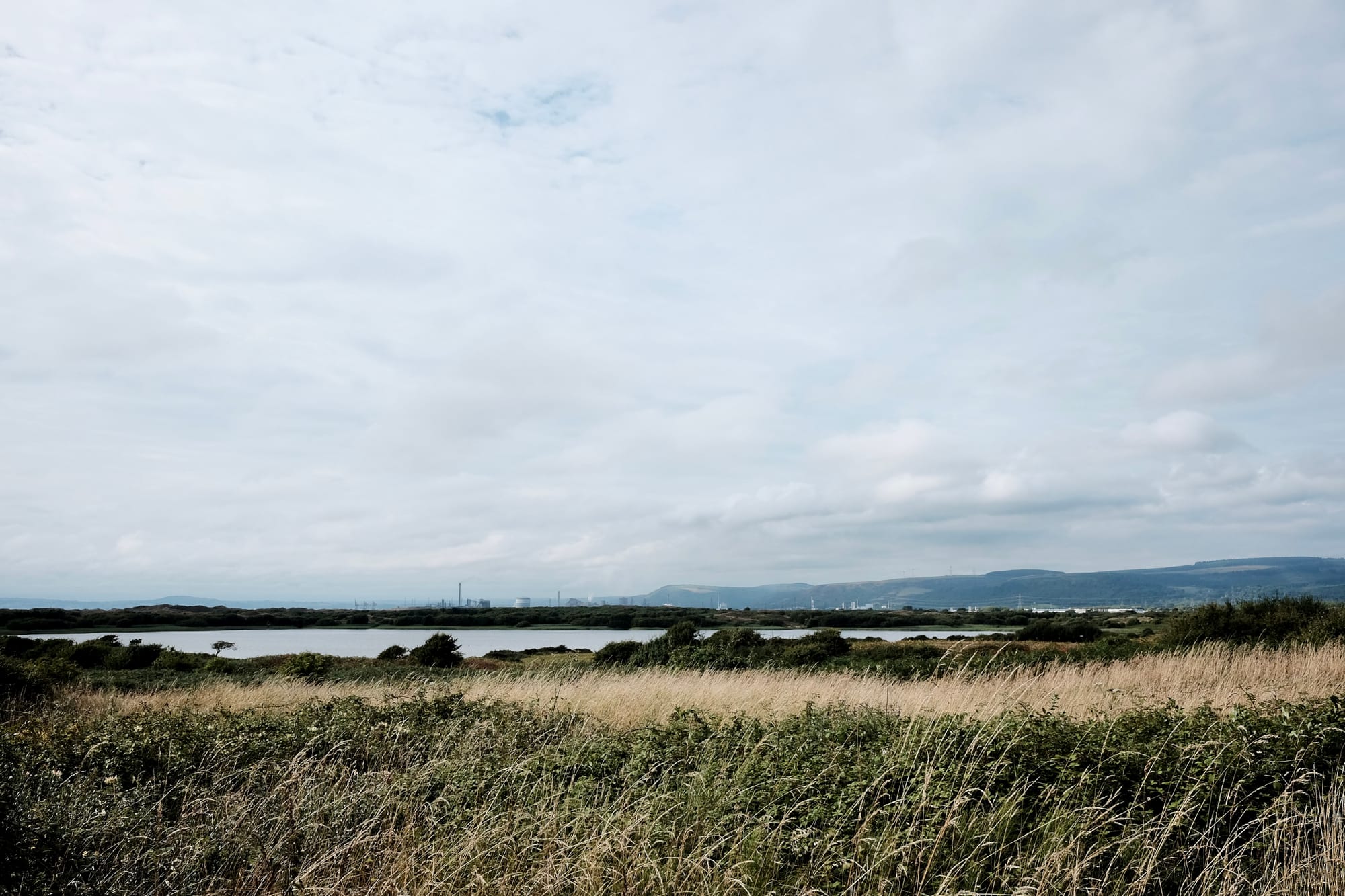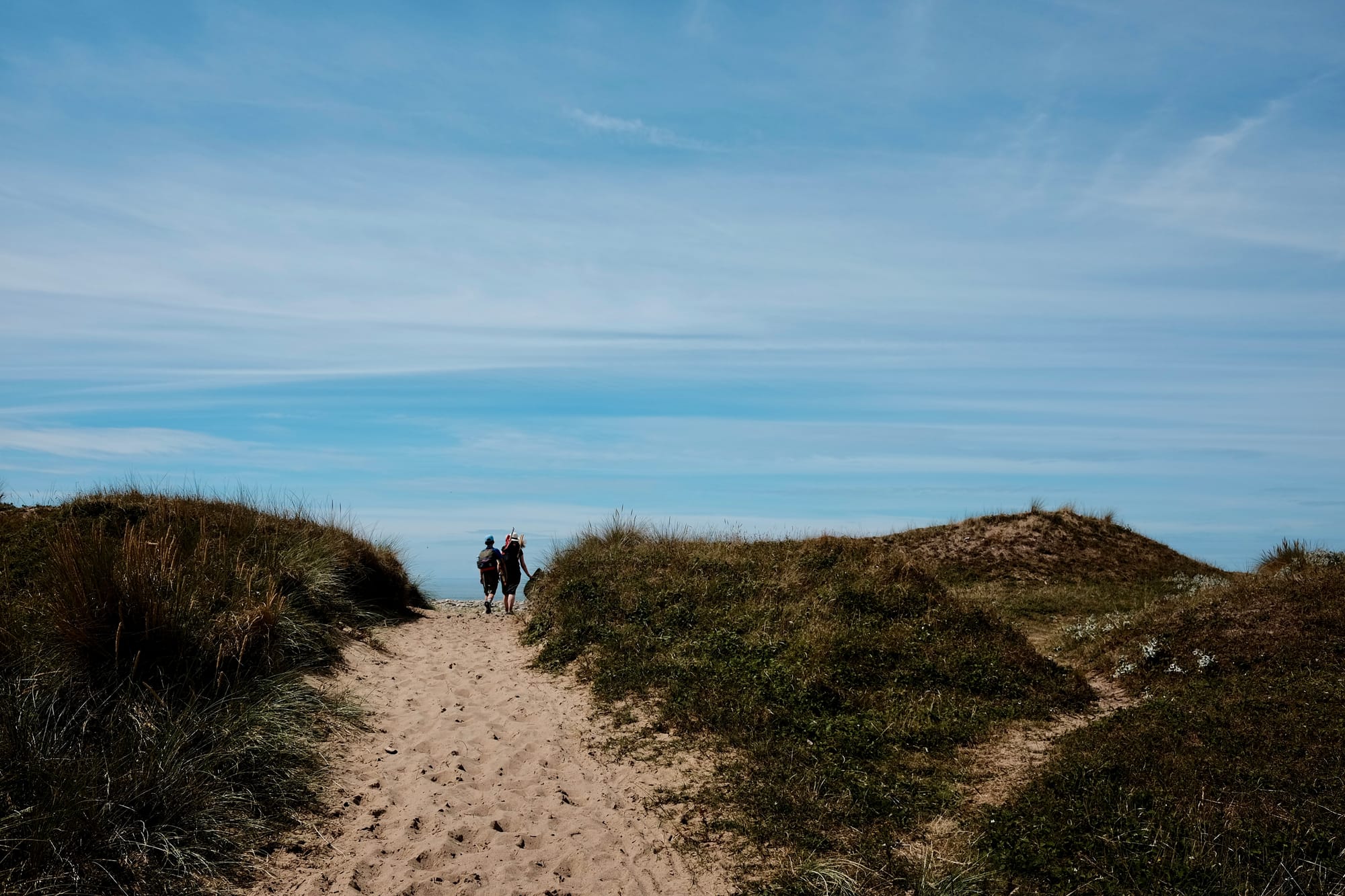Cynffig: life in the sand
A walk through towering dunes takes us into a story of nature, people and a sand-drowned town.

Summer, winter – the season doesn’t matter. Our journeys to Cynffig, or Kenfig as we know it in English, have the same comforting rhythm.
Leaving neighbouring Porthcawl and Rest Bay to the crowds, we walk from the visitors’ centre through the dunes and down to the beach. It always seems further than we remember as we plunge down into the nature reserve and weave along the twisty paths.
The Cynffig dunes are remnants of a larger system laid down 10,000 years ago at the end of the last ice age. They’re up to 12m deep in places and you have no choice but to surrender to their scale and plot a circuitous route to the beach. There are no easy shortcuts, not least because of the underlying clay that makes this one of the wettest dune systems in the UK.
But while loose sand and deep puddles slow our walk, they make an ideal habitat for many plants and animals. The dunes are a National Nature Reserve and a Site of Special Scientific Interest. Some 500 species of flowering plants grow here, including the rare fen orchid – or Liparis loeselii as botanists know it – one of the most endangered wildflowers in Europe. Reptiles, bats, birds, dragonflies, bees, beetles and butterflies all abound. And at the edge of the dunes lies Glamorgan’s largest natural lake.

There are always a few people around when we visit, but the further through the dunes we go, the fewer we see. Local dog walkers stick close to the car park and we’re soon beyond their limits. It’s not unusual for us to emerge on to the beach and find we have mile after mile of sand entirely, excitingly, to ourselves. It’s an almost overwhelming feeling, that urge to experience it all at once. To run along. To paddle. To comb the beach. To fly the kite.
We usually opt to paddle first, pausing only to remove our shoes and socks as we rush towards the waves. It seems unreal – too much, too perfect. But the icy lick of the sea on our feet confirms we are really here. If it’s summer and hot, we might pluck up the courage to head further in. If it’s not, we’re happy at ankle depth and we turn to splash our way along the deserted beach. And the beach often is deserted. Where is everyone else?
Many people never come here because access to the beach is easier around the corner at Rest Bay. Others have come and gone, some of them centuries ago. Where the dunes are today, townsfolk once went about their business – tending to livestock, collecting rents and praying at a church dedicated to St James – in a settlement that later drowned in sand.
Robert, Earl of Gloucester, had a castle and fortified borough built at Cynffig around the year 1140. With the river alongside, this probably looked like the ideal place for a town that could help the Normans cement their control over the conquered lands of Glamorgan. He was almost certainly more worried about the Welsh than about sand dunes, which were likely to have been relatively stable at that time.
And, at first, it was the Welsh who posed the bigger problem – burning down parts of the town at regular intervals. But despite these raids, the settlement flourished until the early 14th century. Then things changed. Slowly, sand swallowed the land and buildings as the dunes began to blow inland – driven, it seems, by a combination of natural processes and human activity.
Did the villagers overgraze their sandy fields? Did the Little Ice Age bring colder, drier and windier weather that whipped up the sand? What would we learn if we could go back in time and visit this doomed town? We might see fear in people’s faces as the Black Death strikes their already sand-drowning settlement. We might see survivors deciding to abandon their homes and move inland. There are some things we can only guess at, but we do know that by the time poet and antiquary John Leland visited in 1538, the place was in ruins – choked by the sand. Today only the top of the castle keep is visible.

During the twentieth century, the dunes halted their advance. Sand that once marched in the wind lay becalmed and the great dunes became stabilised. This enabled vegetation to develop, which gradually turned into thicker scrub. And the scrub suffocated the delicate yellow-green fen orchid. The process seems to have accelerated in later decades: where more than 21,000 orchid plants had grown at the end of the 1980s, just 400 remained in 2011.
Why did the dunes stop moving in the first place? Most of the information I found online doesn’t elaborate. But then I came across a paper in the Journal of Coastal Conservation. It’s by Professor Kenneth Pye and Dr Simon Blott and it explains the processes at work. Initially, they say, stabilisation was encouraged by exhaustion of marine sand supply and a change towards warmer, wetter and less windy conditions. Put simply, there was less sand available and less wind to blow it. But after the 1940s another factor was at play too: us. We changed our habits and in response the sand dunes changed theirs.
Farming began to rely more on nitrogen fertiliser, which washed off into the dunes, encouraging lush growth. At the same time, livestock grazing reduced. And the government decided in the wake of the outbreak of myxomatosis in 1953 to do nothing: rabbit extermination would become its official policy. As tens of millions of rabbits died from the disease across the UK, it’s likely that the population nibbling on the vegetation at Cynffig dunes, and so preventing it from stabilising the sand, decreased markedly.
To try and reverse this effect and enable the sand to move again, conservationists have been scraping back vegetation and reprofiling dunes. Now, following ten years of restoration, the charity Plantlife has counted over 4,000 fen orchids at Cynffig.
We haven’t yet spotted an orchid on our visits to Cynffig. But that just means we’ll have to keep going back to this very special place for another look.

